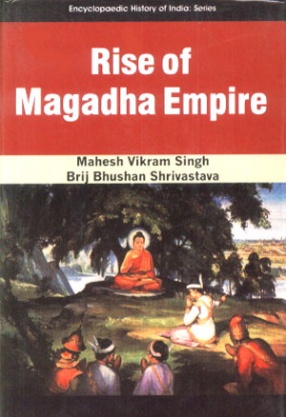The end of the Vedic Age (1500 BC-600 BC) was followed by the rise of small kingdoms and republics in the Northern parts of India and especially in the Gangetic plains of Bihar. These small states later paved the way for large empires. The entrenchment of the caste system, which divided the society between the rulers and the ruled, also facilitated the rise of these states. Between the sixth and the fourth centuries BCE, Maghadha (in present day Bihar) became the most powerful Mahajanapada. The Haryankas: Magadha came into prominence under the leadership of Bimbisara (542-493 BC), who belonged to the Harayanka dynasty. He strengthened his position by marriage alliances. He took three wives. His first wife was the daughter of the king of Kosala and the sister of Prasenajit. His second wife Chellana was a Lichchhavi Princess from Vaishali and his third wife was the daughter of the chief of the Madra clan of Punjab. Marriage relations with the different princely families gave enormous diplomatic prestige and paved the way for the expansion of Magadha westward and northward. The earliest capital of Magadha was at Rajgir, which was called Girivraja at that time. It was surrounded by five hills, the openings in which were closed by stonewalls on all sides. This made Rajgir impregnable. The uniqueness of this book hence leis in the author’s way of reconstructing the period under review by delving deep into the geopolitical ground of that time of India.
Rise of Magadha Empire
Encyclopaedic History of India Series
Book:In stock
Free & Quick Delivery Worldwide
Bibliographic information
Title
Rise of Magadha Empire
Encyclopaedic History of India Series
Encyclopaedic History of India Series
Author
Edition
1st ed.
Publisher
Centrum Press, 2011
ISBN
9789380836591
Length
vi+288p., Bibliography; Index; 23cm.
Subjects








There are no reviews yet.